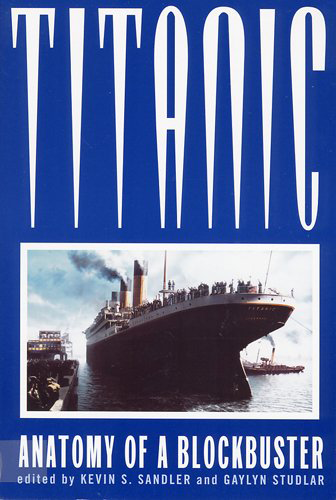Titanic
Subtitle
Anatomy of a Blockbuster
Edited by Kevin S. Sandler and Gaylyn Studlar
On April 14, 1912, the Titanic struck an iceberg off Newfoundland. Taking more than 1,500 souls with her, Titanic sunk on what was intended to be the glorious maiden voyage of the biggest, most expensive and most technologically advanced ship ever built.
In 1997, James Cameron’s "Titanic," the most expensive and technologically advanced movie ever made, hit theaters. In 13 weeks, it became the highest-grossing film in North America, and shortly thereafter, the first motion picture to earn $1 billion worldwide.
The cultural studies and film scholars who have contributed 13 essays to this collection ask key questions: Why? What made "Titanic" such a popular movie? Why has this film become a cultural and film phenomenon? What makes it so fascinating to the film-going public?
The articles address everything from the nostalgia evoked by the film to the semiotic meaningfulness created around “The Heart of the Ocean” diamond that figures so prominently as a symbol in the film. Contributors address questions of the representations of class, sexuality and gender; analyze the cross-cultural reception of the film in nationally specific contexts; examine the impact of strategies for marketing the film through music; and cover the implications of the budget toward the film’s success. Finally, the contributors address the film’s multi-faceted relationship to genre, history, stardom, and contemporary social and economic means.
Bio
Kevin S. Sandler is associate professor in the ASU Department of English's film and media studies program.
Praise for this book
A thought-provoking collection of essays that brings contemporary cinema into serious focus. 'Titanic: Anatomy of a Blockbuster' is wedded to movie history, to current cultural attitudes, and to its impact on viewers. Too bad someone wasn't around to do this for 'Gone With the Wind.'
Jeanine Basinger, chair of the Film Studies Program at Wesleyan University
The authors in this volume offer a first-rate examination of a question that has long vexed studies of media and popular culture: what makes a text resonate so extensively, so deeply with its audience that it becomes a public sensation? Sandler and Studlar have assembled a collection of essays that vividly and persuasively demonstrate the complexity of forces acting on the reception of what became the biggest film blockbuster of them all.
Barbara Klinger, author of "Melodrama and Meaning: History, Culture, and the Films of Douglas Sirk"
